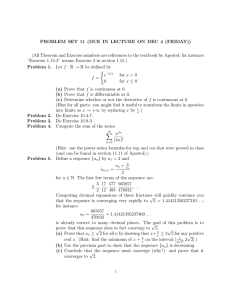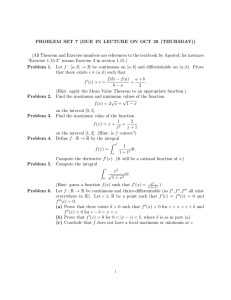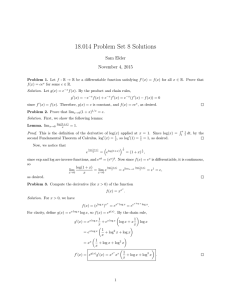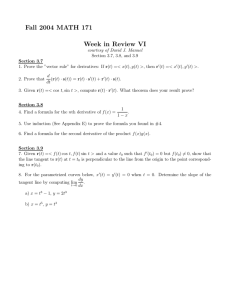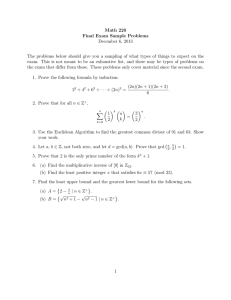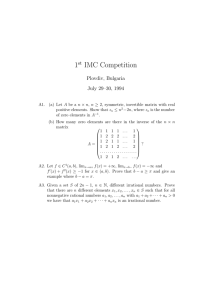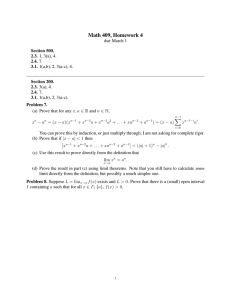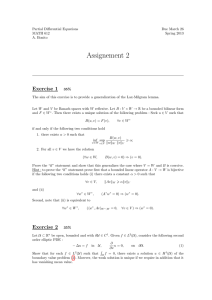PROBLEM SET 8 (DUE IN LECTURE ON NOV 6 (FRIDAY))
advertisement
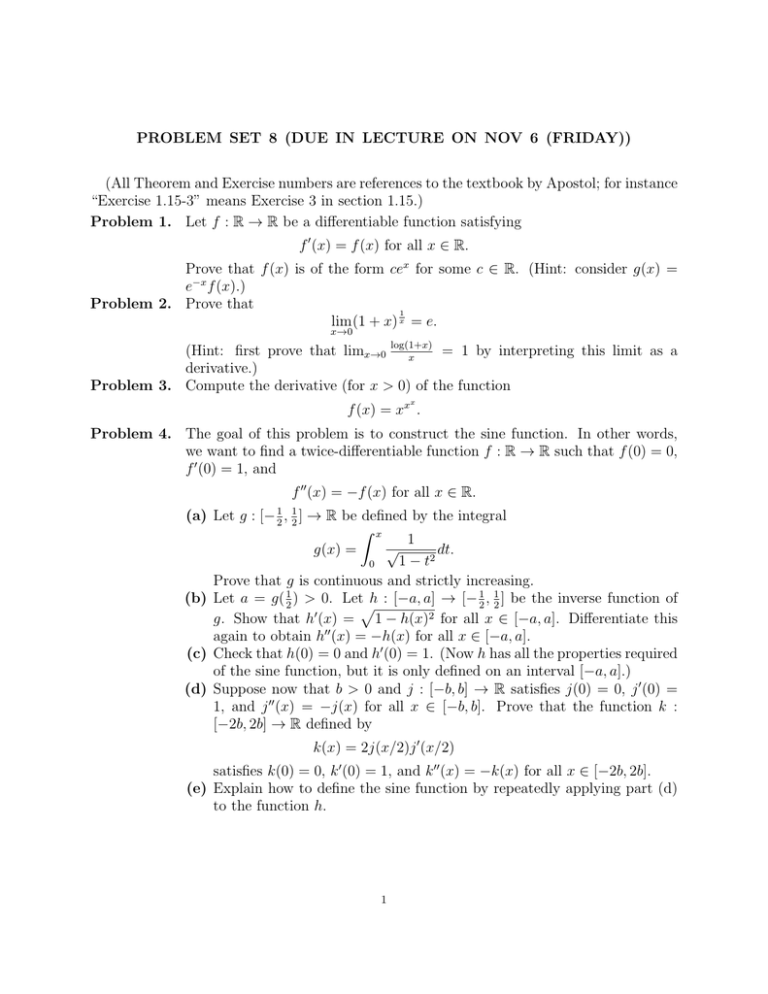
PROBLEM SET 8 (DUE IN LECTURE ON NOV 6 (FRIDAY)) (All Theorem and Exercise numbers are references to the textbook by Apostol; for instance “Exercise 1.15-3” means Exercise 3 in section 1.15.) Problem 1. Let f : R → R be a differentiable function satisfying f 0 (x) = f (x) for all x ∈ R. Prove that f (x) is of the form cex for some c ∈ R. (Hint: consider g(x) = e−x f (x).) Problem 2. Prove that 1 lim (1 + x) x = e. x→0 = 1 by interpreting this limit as a (Hint: first prove that limx→0 log(1+x) x derivative.) Problem 3. Compute the derivative (for x > 0) of the function x f (x) = xx . Problem 4. The goal of this problem is to construct the sine function. In other words, we want to find a twice-differentiable function f : R → R such that f (0) = 0, f 0 (0) = 1, and f 00 (x) = −f (x) for all x ∈ R. (a) Let g : [− 12 , 12 ] → R be defined by the integral Z x 1 √ g(x) = dt. 1 − t2 0 Prove that g is continuous and strictly increasing. (b) Let a = g( 12 ) > 0. Let h : [−a, a] → [− 21 , 12 ] be the inverse function of p g. Show that h0 (x) = 1 − h(x)2 for all x ∈ [−a, a]. Differentiate this again to obtain h00 (x) = −h(x) for all x ∈ [−a, a]. (c) Check that h(0) = 0 and h0 (0) = 1. (Now h has all the properties required of the sine function, but it is only defined on an interval [−a, a].) (d) Suppose now that b > 0 and j : [−b, b] → R satisfies j(0) = 0, j 0 (0) = 1, and j 00 (x) = −j(x) for all x ∈ [−b, b]. Prove that the function k : [−2b, 2b] → R defined by k(x) = 2j(x/2)j 0 (x/2) satisfies k(0) = 0, k 0 (0) = 1, and k 00 (x) = −k(x) for all x ∈ [−2b, 2b]. (e) Explain how to define the sine function by repeatedly applying part (d) to the function h. 1
